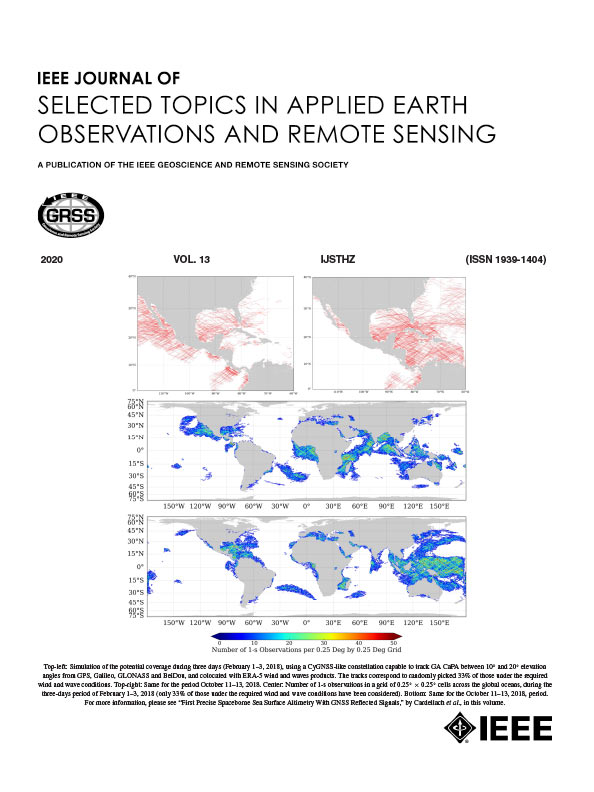商用GNSS-R海洋风速数据集分析
IF 4.7
2区 地球科学
Q1 ENGINEERING, ELECTRICAL & ELECTRONIC
IEEE Journal of Selected Topics in Applied Earth Observations and Remote Sensing
Pub Date : 2025-03-28
DOI:10.1109/JSTARS.2025.3555820
引用次数: 0
摘要
本文对Spire公司全球导航卫星系统反射观测站反演的2021年5月1日至2024年6月1日的二级(L2)海洋风速进行了分析。将检索到的海面风速与欧洲中期天气预报再分析中心v5估算值进行比较,结果显示,使用最新v2.07数据版本的所有风速的相关性为73%,无偏均方根误差(uRMSE)约为2.4 m/s。与先进散射仪(ASCAT) B、ASCAT C、先进微波扫描辐射计2、土壤湿度主动式被动和气旋全球导航卫星系统风的同步观测也显示出高达86$\%$的相关性,总体uRMSE值在1.45-2.03 m/s之间,“三重同步”分析也得出了类似的结果。当风速超过12-15米/秒时,误差会显著增加,这可能是由于Spire接收机的此类测量的信噪比相对较低。然而,海洋风速反演对风暴结构的敏感性已得到证明,这突出了以与参考模式数据相称的方式捕捉大尺度特征的能力。本文章由计算机程序翻译,如有差异,请以英文原文为准。
An Analysis of a Commercial GNSS-R Ocean Wind Speed Dataset
An analysis of Level-2 (L2) ocean wind speed retrievals from 1st May, 2021 to 1st June, 2024 derived from Spire, Inc.’s Global Navigation Satellite System Reflectometry observatories is presented. Comparisons of retrieved ocean surface wind speeds with European Center for Medium-Range Weather Forecasts Reanalysis v5 estimates show correlations on the order of 73$\%$ $\approx$ $\%$
求助全文
通过发布文献求助,成功后即可免费获取论文全文。
去求助
来源期刊
CiteScore
9.30
自引率
10.90%
发文量
563
审稿时长
4.7 months
期刊介绍:
The IEEE Journal of Selected Topics in Applied Earth Observations and Remote Sensing addresses the growing field of applications in Earth observations and remote sensing, and also provides a venue for the rapidly expanding special issues that are being sponsored by the IEEE Geosciences and Remote Sensing Society. The journal draws upon the experience of the highly successful “IEEE Transactions on Geoscience and Remote Sensing” and provide a complementary medium for the wide range of topics in applied earth observations. The ‘Applications’ areas encompasses the societal benefit areas of the Global Earth Observations Systems of Systems (GEOSS) program. Through deliberations over two years, ministers from 50 countries agreed to identify nine areas where Earth observation could positively impact the quality of life and health of their respective countries. Some of these are areas not traditionally addressed in the IEEE context. These include biodiversity, health and climate. Yet it is the skill sets of IEEE members, in areas such as observations, communications, computers, signal processing, standards and ocean engineering, that form the technical underpinnings of GEOSS. Thus, the Journal attracts a broad range of interests that serves both present members in new ways and expands the IEEE visibility into new areas.

 求助内容:
求助内容: 应助结果提醒方式:
应助结果提醒方式:


